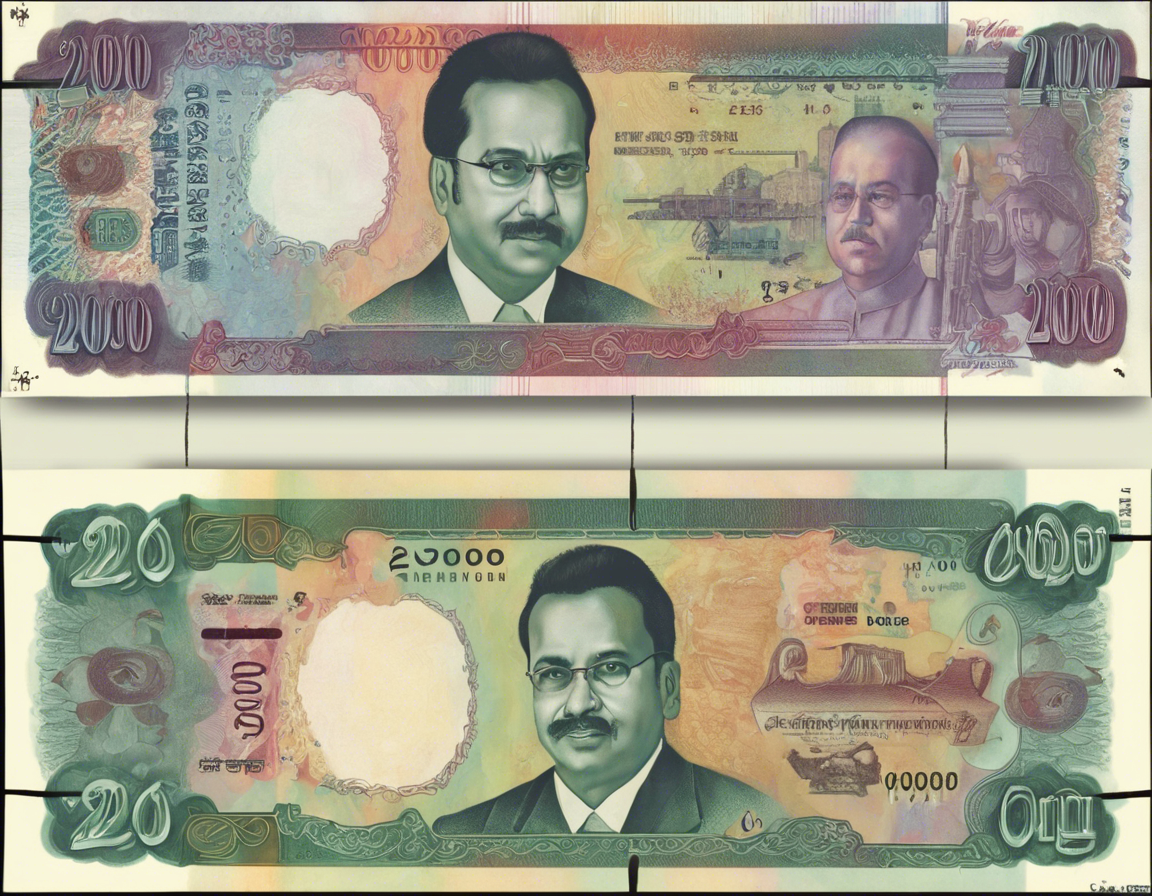The Demise of the 2000 Rupee Note
The 2000 rupee note has been a subject of controversy and debate, sparking discussions about its validity, necessity, and future in the Indian economy. Introduced by the Reserve Bank of India in November 2016 as part of the government’s demonetization initiative, the 2000 rupee note was aimed at curbing black money, counterfeit currency, and corruption. However, over the years, its role and relevance have come under scrutiny, leading to speculations about its potential demise.
Background:
The demonetization move in 2016 aimed to tackle the issues of counterfeit currency and unaccounted wealth. The introduction of new currency notes, including the 2000 rupee note, was a strategic step towards achieving this objective. With enhanced security features and a higher denomination value, the 2000 rupee note was meant to make transactions more convenient and secure.
Challenges and Concerns:
Despite the initial intentions behind its introduction, the 2000 rupee note faced several challenges and raised concerns among policymakers and the public alike. Some of the main issues associated with the note include:
1. High Denomination:
The 2000 rupee note’s high denomination value made it less practical for everyday transactions, especially in a predominantly cash-driven economy like India. Its limited usage in daily transactions led to questions about its actual utility for the common man.
2. Black Money Circulation:
There were concerns that the high-value note was being used to hoard unaccounted wealth or black money, defeating the very purpose of demonetization. Critics argued that the 2000 rupee note facilitated easier hoarding of illicit funds.
3. Counterfeiting Risks:
Despite advanced security features, reports of counterfeit 2000 rupee notes entering circulation raised doubts about its reliability. The prevalence of fake currency notes undermined the trust in the currency and the monetary system.
4. Impact on Digital Payments:
The push towards a cashless economy and the promotion of digital payment methods clashed with the existence of high-denomination notes like the 2000 rupee bill. It was seen as a barrier to encouraging digital transactions and formalizing the economy.
Future Outlook:
Given the challenges and criticisms surrounding the 2000 rupee note, there have been speculations about its potential demise or phased-out withdrawal. The idea of discontinuing the note has been discussed as a means to address the issues it brings to the economic forefront.
Possible Scenarios:
Several scenarios can unfold regarding the fate of the 2000 rupee note:
1. Phase-Out Strategy:
The government may opt for a gradual phase-out of the 2000 rupee note, reducing its circulation over time while introducing lower denomination notes to fill the gap. This approach could help mitigate the challenges associated with high-value currency.
2. Demonetization 2.0:
A second round of demonetization could involve the removal of the 2000 rupee note from circulation, similar to the 2016 move. This could be a more drastic measure to restructure the currency system and address the issues of black money and counterfeiting.
3. Currency Redesign:
Alternatively, the Reserve Bank of India could consider redesigning the 2000 rupee note with updated security features and a revised design to combat counterfeiting. This approach would aim to maintain the note’s circulation while enhancing its credibility.
FAQs (Frequently Asked Questions):
Q1. Why was the 2000 rupee note introduced in the first place?
A1. The 2000 rupee note was introduced as part of the demonetization initiative in 2016 to curb black money, counterfeit currency, and corruption.
Q2. What are the main challenges associated with the 2000 rupee note?
A2. Some key challenges include its high denomination, potential for black money circulation, risks of counterfeiting, and its impact on digital payments.
Q3. Is there a possibility of the 2000 rupee note being phased out?
A3. There have been speculations about the note’s potential demise or phased-out withdrawal to address the concerns surrounding its usage.
Q4. How would the discontinuation of the 2000 rupee note impact the economy?
A4. The impact would depend on the implementation strategy, but it could potentially affect black money holders, cash-reliant businesses, and the overall currency circulation.
Q5. What could be the alternatives to the 2000 rupee note if it is phased out?
A5. Lower denomination notes or a redesigned high-value note with enhanced security features could serve as alternatives if the 2000 rupee note is phased out.
In conclusion, the 2000 rupee note’s future remains uncertain as discussions continue about its relevance, challenges, and potential solutions. Whether it faces a gradual phase-out, a redesign, or another round of demonetization, the fate of the note will have implications for India’s economy and monetary policies. Understanding the underlying issues and exploring suitable resolutions will be crucial in shaping the future of high-denomination currency in the country.

Recent Comments